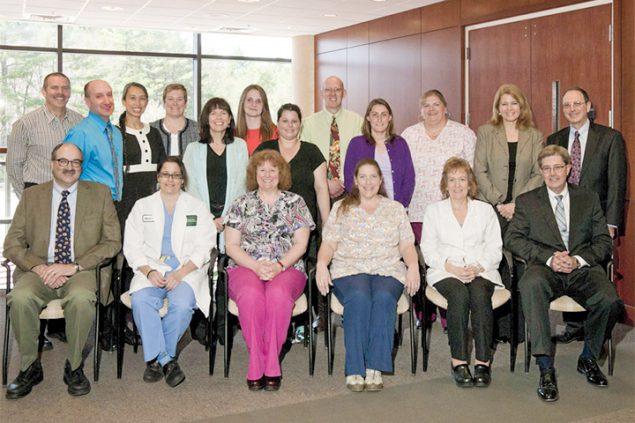Success Story: Medical Center Uses Community Partnerships to Tackle County-Wide Hypertension
Cheshire Medical Center / Dartmouth-Hitchcock Keene, Keene, New Hampshire (2013)
In previous rounds of the Hypertension Control Challenge, Million Hearts® established a benchmark of 70% hypertension control for applicants’ adult populations. This 2013 success story reflects the earlier benchmark.
In 2006, Cheshire County, New Hampshire, set out to become the healthiest community in America by 2020. To achieve this goal, partners across the county—including Cheshire Medical Center/Dartmouth-Hitchcock Keene (CMC/DHK)—joined forces to tackle an array of health issues. Because cardiovascular disease is the county’s leading cause of death, the community decided to focus efforts on that problem, specifically targeting control of high blood pressure, also called hypertension, a major risk factor for heart attack and stroke. As the county’s only hospital, CMC/DHK played a leading role in these efforts, ultimately increasing the percentage of its patients who had their high blood pressure under control from 72.6% to 85%.
What They Did
Designated Hypertension Control Champions
By forming an internal Hypertension Quality Improvement Team, CMC/DHK made this initiative a priority. The 15- to 20-person team brought together members from primary care, specialty medicine, quality control, facilities, communications, and other parts of CMC/DHK to ensure broad representation and understanding. Together, the team helped facilitate a consistent approach to high blood pressure control across practice areas.
- 49,381 patients in rural New Hampshire are served
- 32% have high blood pressure
- 7% belong to a racial or ethnic minority
- 5% are eligible for Medicaid

“It’s about accountability to our patients. We all have a role to play in their health.”
—Andrew Tremblay, MD, family medicine physician
Used team-based care models
CMC/DHK maintained a free nurse clinic that saw hundreds of patients each month. Nurses in the clinic measured blood pressure and coordinated with primary health care professionals to schedule follow-up visits for patients working to manage their high blood pressure. Through the clinic, at-risk patients were identified and connected or reconnected to care.
Implemented consistent, strategic use of electronic health records
A dedicated registry supported the health care team in tracking patients with hypertension. Physicians across CMC/DHK had access to the registry and could add blood pressure readings, helping practitioners identify individuals with high blood pressure who came in for unrelated health issues, such as a broken leg or other medical condition.
Stayed connected to patients
It can be hard to understand how to get blood pressure under control. Cheshire County partners felt that patients should receive consistent messages to make this easier, so the partners made and distributed a patient wallet card to track blood pressure and other important health numbers. This card allowed patients to see the same information at multiple locations throughout the county, including at CMC/DHK.
Advice for Others
For other practices looking to improve hypertension control, CMC/DHK recommends
- Getting buy-in that hypertension must be addressed from inside and outside the clinical setting, such as from local public health entities, and then inviting input on solutions from all stakeholders.
- Thinking outside the box in terms of cost, compliance, and other typical barriers. If the issue is important to the organization and community, examine ways to redistribute resources, such as staff, to meet goals.
- Talking with patients about their role in the team working to achieve blood pressure control so that patients feel empowered and accountable.
CMC/DHK’s providers and staff faced many competing priorities as well as a large volume of patients, often making it hard to focus on high blood pressure control. The key to overcoming these barriers was to reframe chronic conditions as interrelated health challenges to be tackled together, rather than isolated problems to be dealt with one by one.
